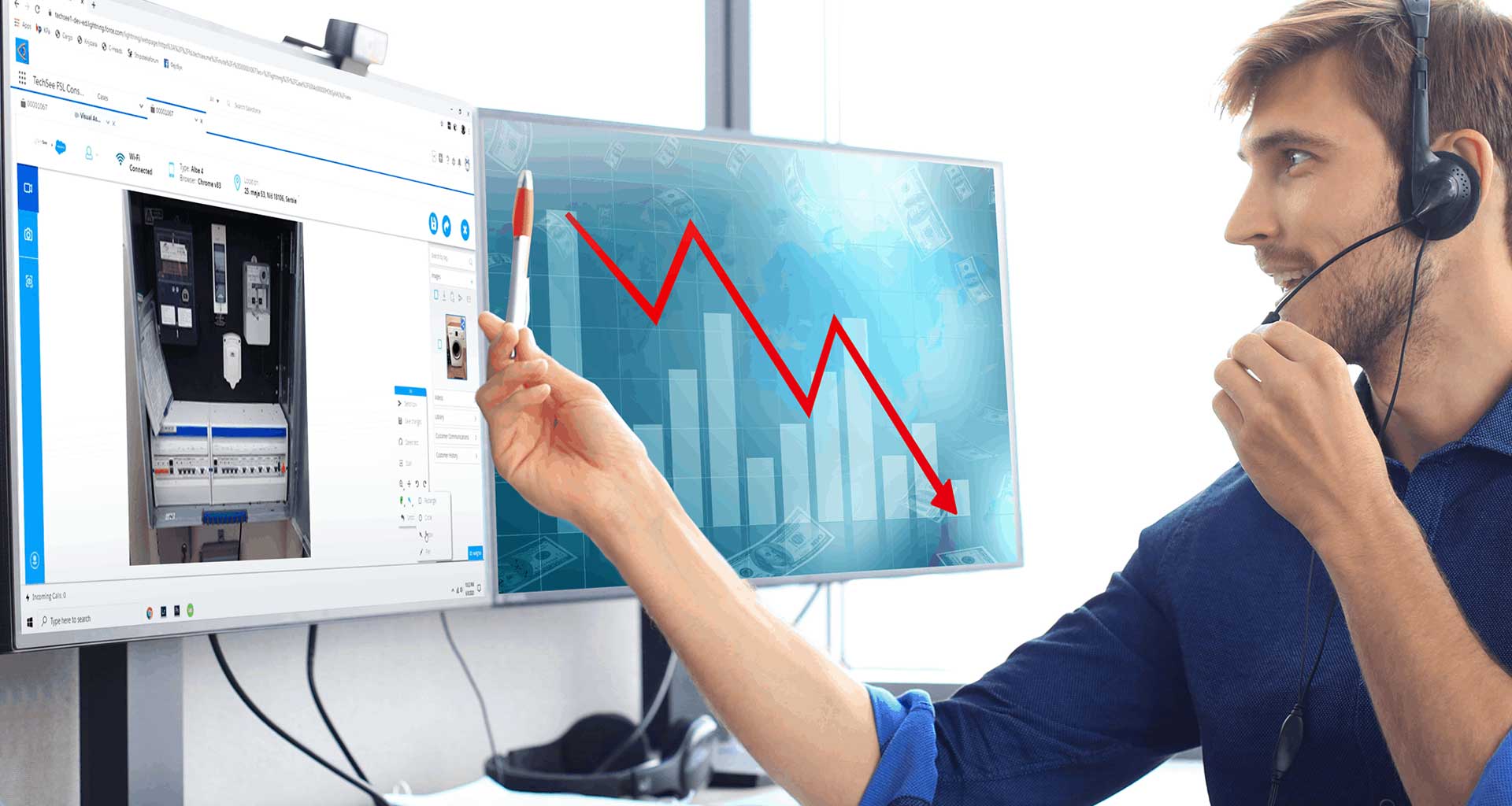Contents
When most service organizations consider implementing Visual Assistance, they mainly focus on how to use the technology to support remote teams in the field or contact center. However, Visual Assistance can deliver value to many other use cases, all of which can help your organization save time and money and improve both the employee and customer experience. Here are five innovative visual assistance use cases you should consider.
Visual Assistance 5 Use Cases Beyond Remote Support
1. Warranty management
Managing the end-to-end lifecycle of consumer product warranties – from product registration through warranty claim – is a costly endeavor. However, it enables brands to connect directly with consumers and engage with them throughout their product ownership. Brands can communicate with their customers providing them with added value beyond the point of sale in areas such as:
- product support
- updates
- safety recalls
- recommendations for additional products
- activating warranties
Investing in the post-sale relationship has been proven to boost brand loyalty and drive more significant follow-up revenues.
Remote visual assistance – either through an agent or in self-service mode powered by computer vision AI – can simplify product registration and streamline warranty management. Brand agents can see the customer’s physical environment via their smart device and visually guide them through the process using Augmented Reality, minimizing the level of effort required.
Consider this visual assistance use case. Suppose a customer wants to register a new printer. The customer can show the device’s serial number or barcode to the agent, and the agent can register the device, with no additional effort on the part of the customer. In the future, if the printer has an issue, the customer can again use remote visual assistance to indicate the serial number and the purchase receipt, enabling the agent to quickly and easily validate the warranty.
2. Quality Assurance
Technicians in all industries need the tools and knowledge to correctly diagnose customers’ issues, and to repair and install parts and devices. These technicians are often dependent on remote experts to assist or confirm their completed work; a process fraught with bottlenecks, wasted time, and extra effort. Field service providers must consider how to support their technicians in the field with expert job verification — especially when it comes to junior technicians and third parties — all while improving first-time fix and increasing overall field service productivity.
Implementing visual guidance tools beyond remote support can also help with quality assurance. Using visual assistance powered by computer vision AI, field technicians can use their smartphones or tablets to capture images of a completed job. The technology identifies any errors and provides automated visual guidance through the steps needed to resolve the problem. Once the repairs are completed, computer vision can automatically verify the job without the involvement of a remote expert, resulting in a highly productive workforce and reduced operational costs.
One particular visual assistance use case example, is when one of the world’s largest telecom providers needed to equip 10K technicians with the tools to manage a national rollout of fiber networks. The company implemented a job verification tool, allowing them to automatically verify if jobs were completed correctly, without necessitating calling a remote expert. Within a few days, they were able to achieve 95%+ accuracy in training their computer vision powered capabilities, and experienced a huge boost in workforce productivity.
3. Return Authorizations/Claims
The issuance of a product return authorization is a key gatekeeping moment in the reverse logistics cycle before the customer permanently relinquishes ownership of the product. The vendor has a final opportunity to diagnose or correct the customer’s problem with the product — such as improper installation or configuration – thereby saving the sale and possibly the customer.
Visual assistance provides a convenient way for consumers to receive authorization to return a malfunctioning product. The agent or technician can see the product in question via the customer’s smart device, and provide the customer with live help to see if their issue can be fixed and prevent the return. If the product is ultimately defective, a web-based Assistant can walk the customer through the process of capturing images of the product, barcode, and proof of purchase. Customer details are automatically extracted using computer vision, and the return authorization is completed with a click. Customers do not have to wait on line, and the company avoids a costly handling process and unnecessary shipments.
4. Onboarding & Training
Traditionally, companies have onboarded and trained new agents and technicians using one-on-one coaching or classroom-style role-playing. This training generally focuses on imparting knowledge. While these non-technological training styles offer several benefits, they can consume a considerable portion of company resources in terms of time and cost. More efficient tools are the key to improving onboarding performance and reducing training times.
Companies can harness visual assistance’s underlying technology – Computer Vision AI – to rapidly expand their visual knowledge base. This works by using images and video from past support interactions to help train and onboard new agents and technicians. Every customer interaction is tagged accordingly, enabling both employees and the system to grow smarter and more resourceful over time.
If live training is needed on the job, a remote expert can use visual assistance to help a new technician in the field. The technician shows the remote expert the issue and receives AR-based guidance over his smartphone, tablet, or smart glasses, ensuring that even novice technicians can complete tasks correctly the first time.
5. Sales Support
Companies can drive more sales by providing customers with high levels of customization and personalization. Visual assistance technology gives customer service reps and field technicians a set of eyes where they previously had none. It allows customer service agents to see the customer’s physical environment via a web connection for real-time, interactive visual engagement.
Here is another visual assistance use case: An agent for a window treatment company can see the customer’s home and suggest curtains based on the room’s décor. The consultant can guide the customer through the measurement process and even correct the customer if they mis-measure a corner.
Visual assistance technology can also be used beyond remote support cases to enable field technicians to offer customers post-sales upsells such as:
- extended warranties
- service contracts
- replacement parts
Visual Assistance Above and Beyond Remote Support
Visual assistance can be used by brands for more use cases than just remote technical support. The technology can be used beyond remote support for use cases such as:
- managing the end-to-end lifecycle of consumer product warranties
- providing field service technicians with automatic job verification for quality assurance
- reducing product return rates with return authorizations
- improving staff onboarding performance
- shortening training times
- boosting revenue through personalized connections for more pre- and post-sales support.
For a demo to see one of these visual assistance use cases in detail, please click here.






